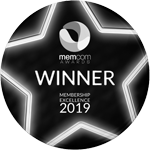Return to Work Plans: Important Factors to Consider
24 September 2020


By Katariina Hannelius, Owner of Hannelius Recruitment
As the series has covered various challenges already, there are few more to discuss. Having spoken with several candidates over several months and also employers, it’s clear that the emotional aspects have and are having major impacts on many. The clear ones being fear of the virus, travel issues, and safe offices. On top of this, there are many employees that have been furloughed, or had to take salary cuts or are working reduced hours with reduced salary, and many are concerned about their job security for the next 6 months and beyond.
On the other hand, another key consideration is that furloughed staff have had to hand over their clients/projects, ones they might have worked with for several years and feel very passionate about, to colleagues. So, when coming back to work who is going to have the account moving forward? The person who has worked on these projects on the other hand over the last few months might also feel they want to keep working on the project because they have put so much of their time and effort into them and made progress that they can build on. It is going to be a tricky balance.
Also, I have spoken to several non-furloughed employees who have taken over several tasks/roles and are struggling with huge workloads, with some that feel their furloughed colleagues are on “holiday” having seen their social media updates in the sun etc. Bringing the teams/departments/companies together whether online or face to face needs to be a key priority when bringing employees back.”
My tips to communicate and overcome concerns and issues are:
- An internal anonymous survey on return to work covering as many issues as the company can see. And the non-furloughed staff should also be included to find out how they feel about their colleagues coming back etc
- Online one to one with line manager discussing the results of the survey together and encourage them to bring any other thoughts to the meeting and building together a plan that would work for the individual
- Regular follow ups and meetings with the team/dept etc
- Team building sessions (there are quite a few online approaches emerging)
- Flexible working times so that people don’t need to travel in rush hour if they are returning to the office or if they are working remotely allow flexi time to fit in with their circumstances at home.
- A video briefing meeting to show everyone what the office will be like when they do return so that they can be reassured.
Communication is the key here to getting employees back feeling motivated, valued and loyal and this should be an ongoing priority moving forward.
Get the latest MRS news
Our newsletters cover the latest MRS events, policy updates and research news.











0 comments